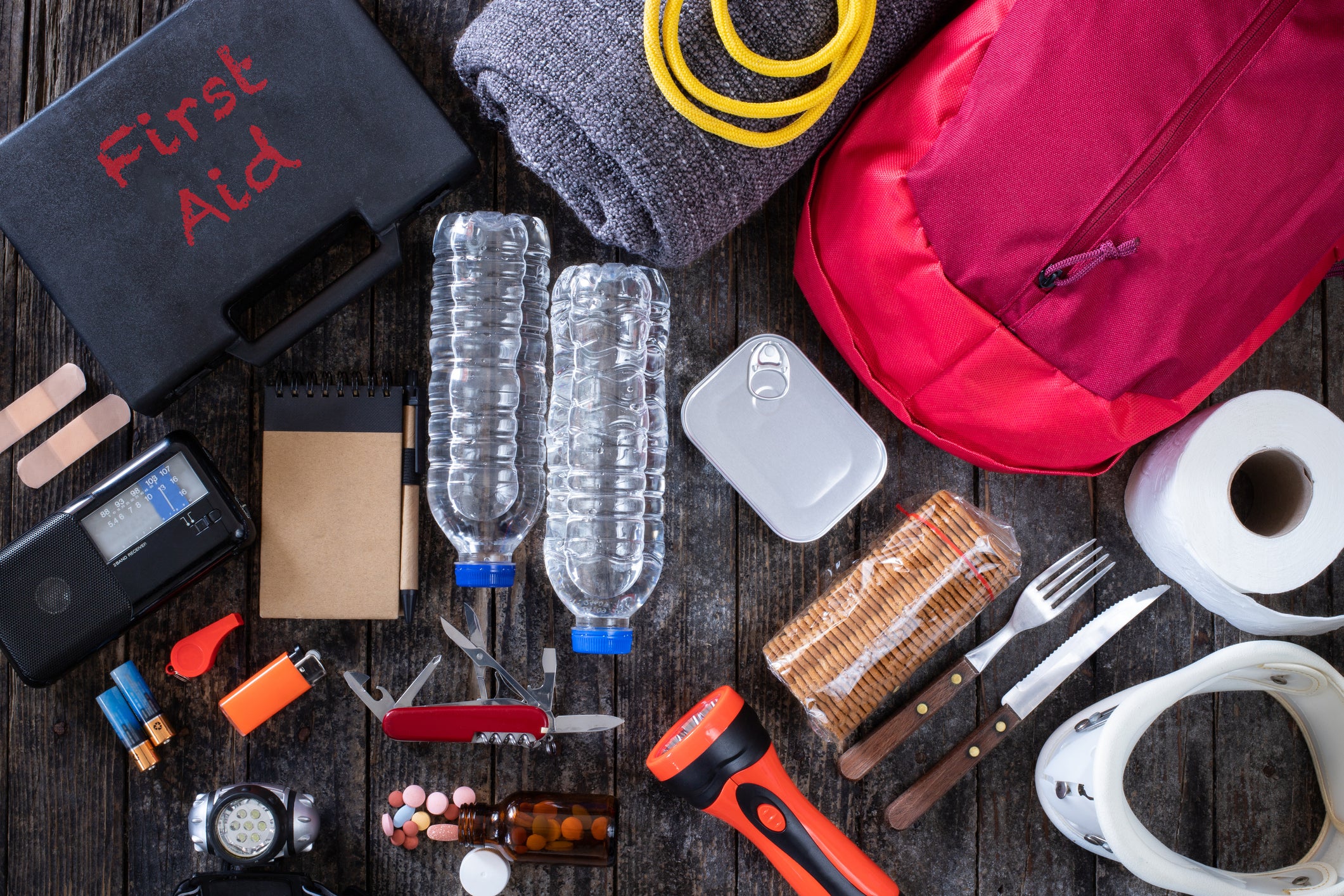An emergency kit should always be tailored to the situation at hand. A variety of things will be required in an emergency kit, depending on the situation. Everyone's needs are different, so you'll want to consider the reason that you need your emergency kit.
A medical emergency kit should always be on hand, regardless of the situation. From splinters to breaks, something can always be required, and you'll want to be properly prepared for whatever might happen while you're out and about. Here are some basic medical emergency kit suggestions to keep on hand or in your vehicle.
Medical Emergency Kit
Tweezers
Gauze
Small scissors
Bandaids: Butterfly and regular
Adhesive tape
Super glue
Ace bandage (elastic wrap)
Large handkerchief (can be folded into a triangle and used as a sling)
Tourniquet
Cotton balls
Cotton swabs
Lubricant such as petroleum jelly
Duct tape (great for holding gauze or splints on)
Antibiotic ointment
Antiseptic solution
Eye wash solution
Eyeshield or cup
Finger splints
Disposable gloves
Plastic bags
Safety pins
Hand sanitizer
Plastic bags (several sizes and zippered and non-zippered)
Thermometer
Ice packs
Bulb suction (for flushing out wounds)
Sterile saline solution (many use a contact lens saline solution)
Surgical mask
Syringes
Peroxide
First aid book
Pain reliever (such as aspirin, ibuprofen, or acetaminophen)
If someone in your group has specific medications that they require, you may wish to keep a few extras in your medical kit. It just may save their lives if you're stranded somewhere.
Additional emergency kits that you may wish to consider are a food kit and a sewing kit. Here are some basics to keep on hand for these types of emergencies.
Emergency Food Kit
A supply of water for each person in the group.
Highly nutritious snacks such as nuts and dried fruits, granola bars, or foods that are easy to pack and lightweight.
Jerky (there are a variety of kinds on the market today)
Trail mix (buy one or create your own with your favorite snacks)
MRE (meals ready to eat are often kept in an emergency food kit)
Peanut butter
Almond butter
Juice boxes
Non-perishable milk
Can opener
Canned meats
Canned beans
Canned ready-to-eat meals
High energy foods
Small containers for leftovers or zipper-style plastic bags
Small pot or kettle to heat water
Emergency Sewing Kit
There are many times when an emergency sewing kit can come in handy. If there is a tear in the tent or your last pair of pants rip, you're really going to appreciate this kit. Here are some suggestions to get you started on what to pack in your sewing kit.
Assortment of needles
Assortment of sewing thread
Fishing line (excellent for repairing tents etc.)
Small scissors
Needle threader
Patches (ideal for covering holes in tents or pants)
This kit can also double as a suture kit should someone require stitches due to an injury
Basic Travel Kit
If you're traveling away from your normal routine, on a vacation, or on any other trip, there are some basics that you'll want to have on hand for any emergency situation.
Flashlight
Extra batteries
Wind-up or solar radio (some will also use batteries as backup)
Map
Signal lights (they make a lantern that also operates as a signal light)
Extra water (enough for each person and the radiator of the vehicle)
Food (see above)
Whistle (for signaling)
Solar chargers for smartphones and other items that work off of a charge.
After all of this preparation, it's important to ensure that your vehicle is ready for travel. Check all the fluids and ensure you have plenty of extra things like washer and brake fluid. If you have a HAM radio license, a portable radio is also a nice addition to any emergency kit.
It's important to always be prepared. Even if you don't use all of the items in your kit, you'll feel safer knowing that you have them there if you need them. Make sure to replace any items that are used in an emergency.
What Should I Put In My Emergency Kit?

